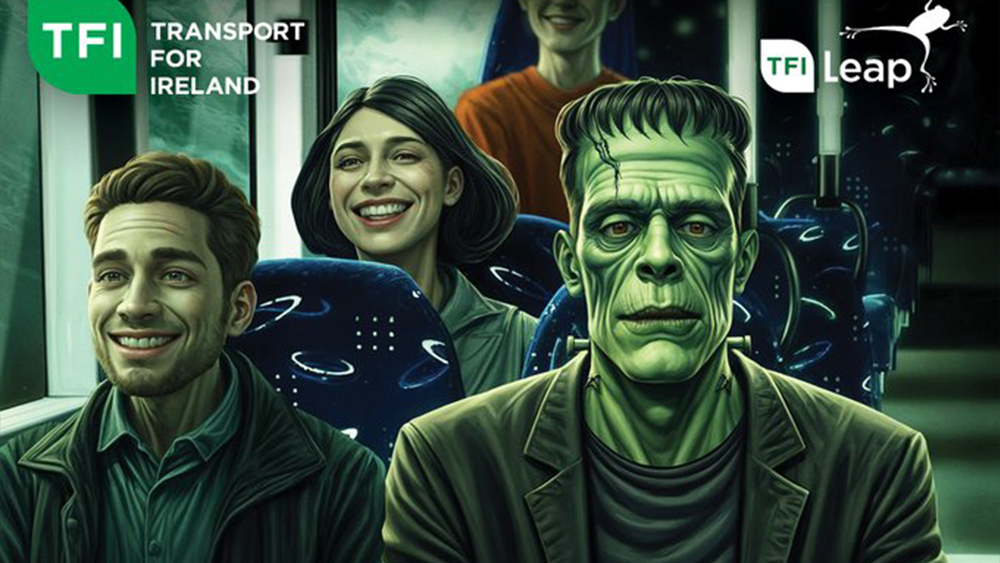
Transport for Ireland is the latest organisation to discover that using AI art for a brand campaign can seriously backfire. Commuters were quick to label its Halloween campaign as lazy, embarrassing and worse after it tried to engage social media users with AI images.
The transport provider made social media posts offering commuters a chance to win €50 travel credit if they guessed the identities of the characters in a series of four illustrations. But dozens of people, including some Irish artists, piled on the posts to criticise the obvious use of AI image generation.
A post shared by Transport For Ireland (@transportforireland)
A photo posted by on
The illustrator Phil Dunne responded on the former Twitter saying: "I’m really disheartened to see AI used for this promotion. You could have hired an Irish illustrator and paid them for this type of promotion." "You guys focus so much on sustainability and then use AI generated images which are awful to the environment instead of just commissioning Irish artists," another person wrote. "Really hard to tell what these characters are supposed to be with the mess of AI generated slop used to make them," was another opinion.
Hi Phil, Thank you for you feedback, we have received a large volume of messages similar to yours and have taken your comments on board. We apologise for the frustration caused.Thanks, TFIOctober 22, 2024
Transport for Ireland (TFI) has responded individually to many of the comments, apologising for any “frustration” caused. It told The Journal that the concept had been proposed by an agency, which had applied an “AI filter” to existing images available on Shutterstock, the stock photo library.
It said: “We thought this was a novel idea worth exploring for a small campaign as we’re always open to exploring the latest tools and technologies in the creative space in collaboration with our agencies.” Commuters are disappointed that this exploration of the latest technologies hasn't yet extended to the use of tap payment by bank card for trains and busses.
While AI artworks created by an autonomous AI artist just sold at Sotheby's for over $350,00, numerous companies and organisations have faced online embarrassment after being shamed for using AI art. We've seen examples as varied as Lego, the Tedeschi Trucks Band, Dungeons & Dragons and Toys R Us.
The continued public backlash shows that despite advances in the technology, the use of fully blown AI image generation for final assets can still be toxic. It's no wonder that some brands are banning AI in advertising contracts.
Get the Creative Bloq Newsletter
Daily design news, reviews, how-tos and more, as picked by the editors.

Thank you for reading 5 articles this month* Join now for unlimited access
Enjoy your first month for just £1 / $1 / €1
*Read 5 free articles per month without a subscription

Join now for unlimited access
Try first month for just £1 / $1 / €1

Joe is a regular freelance journalist and editor at Creative Bloq. He writes news, features and buying guides and keeps track of the best equipment and software for creatives, from video editing programs to monitors and accessories. A veteran news writer and photographer, he now works as a project manager at the London and Buenos Aires-based design, production and branding agency Hermana Creatives. There he manages a team of designers, photographers and video editors who specialise in producing visual content and design assets for the hospitality sector. He also dances Argentine tango.
